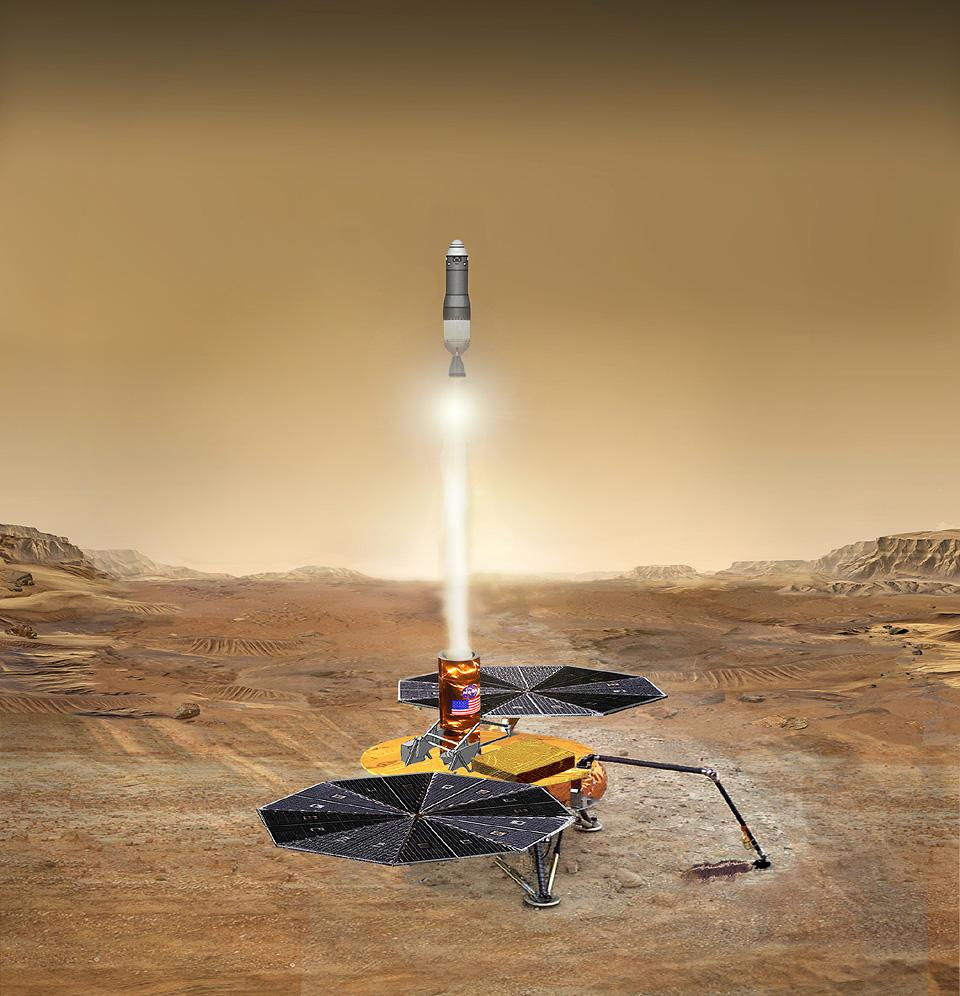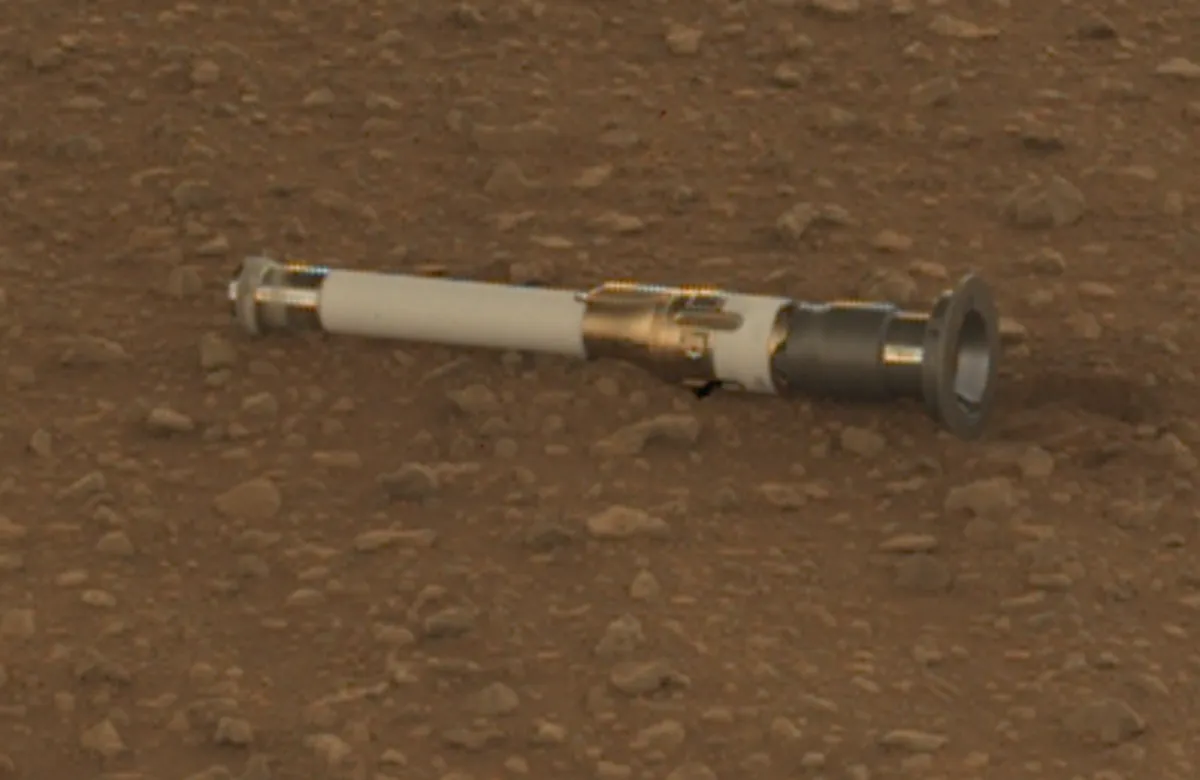NASA's Mars Perseverance rover simply Prepared and left its first sample on the Martian surface to be collected my Next Mars Mission in 2024
NASA's Perseverance rover collected this tube's sample from a Mars region rich in organics. Scientists soon will scrutinize tubes like this for signatures of life.
NASA's Perseverance expedition left behind a record of the materials that a follow-up mission might carry back to Earth as it dumped its first cache of priceless rock samples on the Martian sands. According to a statement released by NASA on Wednesday, it's an important turning point in the quest for life on Mars (Dec. 21).
According to a NASA update(opens in new tab), the rover's contribution to the search for "ancient microbial life" in an old river delta will contain 10 titanium tubes that have been left behind at the site known as "Three Forks."
If plans go according to plan, Perseverance or two helicopters (like the Ingenuity Mars helicopter that just completed its 37th flight and is now in flight) will transport stone tubes like this one from Jezero Crater to a waiting ship at some point in the 2030s.
However, Perseverance collects twin samples at each place, and its mission calls for it to handle the delivery itself utilizing the system of caches inside the rover. This tube is merely a backup store. However, if required, the backup tubes that were left on the Martian surface might be picked up by the helicopters.
Whatever means of delivery are used, a spaceship will send the tubes into orbit and transport the samples to an orbiter that will return the Martian samples to Earth. The historic shipment will be the first time rocks from Mars have reached Earth, with the exception of a few meteorites that have fallen upon our planet.
 |
| source: space.com |
Water, one of the essential components of life, is abundant on Mars, or at least it was in prehistoric periods. Even while Mars appears dried out and dusty today, huge gorges, enormous icebergs, and probable underwater reserves hint that the planet was once rich in water.
But "ground reality," which is where perseverance comes in, is needed to determine whether there was enough to support life. Sending the samples back to Earth will give entire labs the chance to examine the Martian fragments for signs of ancient life, but a rover can only carry so many instruments.
The first sample to strike the regolith was taken on January 31 from an area known as "South Sétah" and is about the size of a piece of chalk. It came from an igneous rock known as "Malay." Scientists identified organics, a potential component of life, in South Sétah weeks before collecting the sample, which makes the location significant in and of itself.
It took the Perseverance, which was the size of a car, nearly an hour to spit out the tube from its belly. The snapshots got here again displaying the tube became nicely out of the manner and flat, however NASA did have a contingency plan in region in case the tube ended up upright withinside the sand. "The challenge has written a sequence of instructions for Perseverance to cautiously knock the tube over with a part of the turret on the give up of its robot arm," employer officers wrote.
Engineers examined the tube-pulling down method with a Perseverance-like rover internal the "Mars yard," an tailored sandbox on the Jet Propulsion Laboratory in Pasadena, California in which machines are examined in situations just like the Red Planet. Upright deposits befell approximately 5 percentage of the time in those simulations, that's why the challenge has backup.
The milestone drop is going on simply weeks earlier than the give up of Perseverance's top challenge on Jan. 6, 2023; the challenge will notch Earth years at the Martian floor on Feb. 18. The rover will maintain roving through a challenge extension, primarily based totally on its technological know-how guides and contributions like this to the pattern return.
"It's a pleasing alignment that, simply as we are beginning our cache, we are additionally ultimate this primary bankruptcy of the challenge," Rick Welch, Perseverance's deputy venture supervisor at JPL, stated withinside the equal statement.
The advantage of analyzing samples on Earth - rather than assigning the task to a rover on Mars - is that scientists can send a large and complex set of advanced laboratory technologies to Mars. And they can do rapid research in the laboratory where they provide a lot of information about the existence of life on Mars. Meenakshi Wadhwa, lead scientist for the Mars Sample Return Program, of NASA's Jet Propulsion Laboratory in Southern California said: "I have dreamed of getting samples from Mars to analyze where I was a graduate student. "Collecting these samples well, we will eventually have them analyzed in the best laboratory here in the world when they are returned."
The return of Mars will include many first steps to solve an open question: did life take root elsewhere in the universe than on Earth? "I've done all my work for the opportunity to answer that question," said Daniel Glavin, an astronomer at NASA's Goddard Space Flight Center in Greenbelt, Maryland. Glavin is helping design systems to protect Martian samples from contamination during their journey from Mars to Earth. Developed in collaboration with ESA (European Space Agency), the Mars Sample Return will require a rocket loaded with precious cargo to be launched from the surface of Mars. Engineers need to ensure that the rocket's path is aligned with the Mars orbiter so that the sample capsule can be delivered to the orbiter. The orbiter will bring the sample capsule back to Earth where scientists will wait to safely transport it to the biohazard repository, which is now open.
ProtectProtect Earth from Mars
Keeping the samples clean for rigorous studies in the world while their storage containers are subjected to rigorous treatment to ensure that no dangerous substances are sent to the world is a task that makes view of Mars is truly unprecedented. Billions of years ago, the Red Planet may have had a suitable environment for life that thrived in hot and humid conditions. However, it is unlikely that NASA will return samples of Martian organisms, based on decades of data from orbiters, landers and rovers on Mars. Instead, scientists hope to find fossils or other signs of ancient microbial life.
Despite the small risk of bringing any life back to Earth, an abundance of caution prompts NASA to take the necessary steps to ensure that Martian samples are properly maintained throughout their journey. After collecting rock cores from Jezero Crater and placing them in tubes made of titanium, one of the strongest metals in the world, persistence seals the tubes to prevent accidental release of even a little bit. The tubes are stored in the belly of the rover until NASA decides when and where they will be dropped on the Martian surface. The return mission will include the ESA sample rover that will be launched to Earth later this decade to return the samples collected by Perseverance.
Engineers at NASA's Glenn Research Center in Cleveland, Ohio, are designing the wheels for the spacecraft. The rover will transfer the sample to a lander, under development at JPL. A robotic arm on the ground will carry the sample to the tip of a rocket made by NASA's Marshall Space Flight Center in Huntsville, Alabama. The rocket will deliver the sample capsule to Mars orbit, where the ESA mission will be waiting to receive it. Inside the orbiter, the capsule will be prepared for delivery to Earth by a mission led by NASA Goddard. This preparation will include sealing the sample capsule in a sterile container to trap any Martian material inside, sterilizing the seal, and using a robotic arm developed at Goddard to place the sealed container in the capsule before reentry. return journey to earth.
This example shows an idea for a future group of robots working together to return samples from the surface of Mars collected by NASA's Perseverance rover. This example shows an idea for a group of robots in the future working together to return samples to the surface of Mars collected by NASA's Perseverance rover.
Source: NASA/ESA/JPL-Caltech, space.com




Comments
Post a Comment